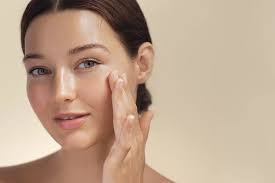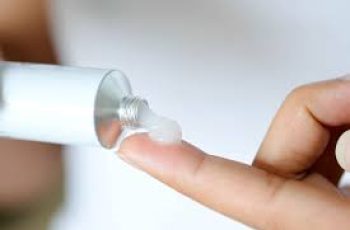
What Is Dermaplaning and How Can It Benefit Your Skin?
Dermaplaning is a gentle exfoliation treatment that removes dead skin and fine facial hair using a small, sterile blade. It’s a popular choice for smoother, brighter, and more even-looking skin.
Originally used by dermatologists and estheticians, dermaplaning is now offered in med spas and skin clinics. Some people even try it at home, though professional treatment is more effective.
This guide will explain how dermaplaning works, what to expect, who it’s best for, and the risks and benefits you should know.
What Is Dermaplaning?
Dermaplaning is a cosmetic treatment where a sharp, medical-grade blade is gently run across the skin.
This process removes:
Dead skin cells
Dirt and oil buildup
Fine vellus hair (peach fuzz)
The goal is to exfoliate the top layer of skin and reveal smoother, brighter skin underneath. It also helps skin care products work better by allowing them to absorb more easily.
How Does Dermaplaning Work?
A trained professional uses a sterile scalpel at a 45-degree angle to scrape off buildup from the skin’s surface.
You may feel a light scraping sensation, but it shouldn’t hurt. Most sessions last between 10 and 60 minutes, depending on the area treated.
Dermaplaning is more than just shaving. While both remove facial hair, dermaplaning also deeply exfoliates dead skin cells that dull your complexion.
Benefits of Dermaplaning
Dermaplaning offers many skin benefits. While results are temporary, many people choose to repeat the treatment regularly for glowing skin.
1. Smoother, Brighter Skin
Dead skin cells make the face look dull and feel rough. Dermaplaning removes them to reveal softer, more radiant skin.
2. Better Product Absorption
Skincare products like serums and moisturizers absorb better after dermaplaning because the barrier of dead skin is gone.
3. Removes Peach Fuzz
The blade removes fine facial hairs, which can make makeup go on smoother and reduce patchiness or caking.
4. Fades Dark Spots
By exfoliating, dermaplaning can fade hyperpigmentation from acne, age, or melasma, leading to a more even tone.
5. Softens Fine Lines
It boosts cell turnover and collagen production, which can reduce the appearance of fine lines and mild acne scars over time.
Who Can Benefit from Dermaplaning?
Dermaplaning is a good option for people who want smoother skin with little to no downtime. It’s often safer than chemical peels or lasers for sensitive skin.
It works well for those with:
Dry or dull skin
Uneven texture or tone
Acne scars (non-inflamed)
Fine lines and wrinkles
Light facial hair
Who Should Avoid Dermaplaning?
Dermaplaning is not for everyone. You should avoid this treatment if you have:
Active acne or skin infections
Cold sores or open wounds
Rosacea or eczema flares
Raised scars or keloids
A history of skin cancer in the area
If you’ve taken acne medication like isotretinoin (Accutane) in the past 6 months, you should avoid dermaplaning due to the risk of scarring.
What to Expect During the Procedure
Before your treatment, your provider will ask about your skin concerns and medical history.
During the procedure:
Your face is cleansed and dried.
A sterile blade is gently moved across your skin.
You may feel slight scraping, but it should not hurt.
Afterward, a soothing serum or moisturizer is applied.
The whole process is quick, and there is no need for anesthesia.
What Does Recovery Look Like?
Recovery is simple and short. After dermaplaning, your skin may feel sensitive, warm, or slightly pink—similar to a mild sunburn.
These effects usually fade in a few hours or by the next day. You can return to your regular routine right away.
However, your skin will be more sensitive to sunlight. You’ll need to avoid direct sun exposure and apply SPF 30 or higher daily.
How Often Should You Get Dermaplaning?
Most people repeat the treatment every 3 to 4 weeks. This is because it takes about 28 days for new dead skin to build up again.
Depending on your skin type and goals, you may choose to do it monthly or every other month.
Frequent dermaplaning can support long-term improvements in tone, texture, and brightness.
Does Dermaplaning Make Hair Grow Back Thicker?
No. This is a common myth. Removing facial hair with dermaplaning does not change its color, thickness, or growth rate.
Hair will grow back just as it was before—soft and light. It may feel different when growing in, but it won’t become coarse or dark.
What About At-Home Dermaplaning?
There are many at-home dermaplaning kits available, but they are less effective than professional treatments.
At-home blades are often serrated and not as sharp. They remove surface-level debris and hair but do not exfoliate as deeply.
Also, improper use can lead to:
Nicks or cuts
Skin irritation
Spread of bacteria
If you try it at home, always use a clean, sterile blade, and follow the instructions carefully.
Are There Any Risks or Side Effects?
Dermaplaning is usually safe when done by a trained professional. However, it can still come with some mild side effects.
Common side effects include:
Redness, Sensitivity, Slight swelling, Tingling
These usually go away within 24 hours.
Rare risks include:
Infection
Scarring
Post-inflammatory hyperpigmentation (PIH)
Worsening of melasma if done improperly
Always see a licensed provider to reduce these risks.
How to Care for Skin After Dermaplaning
Proper aftercare helps your skin heal and stay glowing after treatment. Here’s what to do:
Avoid sun exposure for at least one week.
Use sunscreen daily with SPF 30 or higher.
Don’t use retinol, exfoliants, or strong acids for 2–3 days.
Gently wash your face with a mild cleanser.
Moisturize daily to soothe and protect the skin barrier.
If your skin feels irritated or itchy, avoid scratching and use a cooling, fragrance-free moisturizer.
Dermaplaning vs. Other Exfoliating Treatments
Let’s compare dermaplaning with other exfoliating treatments:
Treatment Invasiveness Recovery Time Key Benefit
Dermaplaning Low 1–2 days Smooth texture, remove peach fuzz
Chemical Peel Medium–High 3–7 days Fade hyperpigmentation, stimulate collagen
Microdermabrasion Low–Medium 1–3 days Sand away rough skin, improve tone
Laser Resurfacing High 7–14 days Targets deep wrinkles and damage
Dermaplaning is a great choice if you want instant smoothness with minimal irritation and no peeling.
Quick Summary
Dermaplaning removes dead skin and peach fuzz with a sterile blade.
It helps brighten the skin, fade spots, and soften lines and scars.
It boosts skincare absorption and allows smoother makeup application.
It’s best for people without active breakouts or inflamed skin.
Professional treatments are more effective and safer than DIY kits.
Sun protection and hydration are key aftercare steps.
DQH Knowledge drop: In your 20s, your skin cell turnover decreases. (Cell turnover is a key component in keeping your skin youthful.) You know what else slows down? Your collagen production. Starting in your 20s, collagen decreases by about 1 percent per year. Should you want to prevent fine lines and wrinkles, start by eliminating behaviors that contribute to premature aging. “If it’s bad for you, it’s bad for your skin,” says dermatologist Michel Somenek.
“Cigarette smoking reduces blood flow to the skin and causes premature wrinkling and a dull skin texture. Making the repeated pursed motion to inhale can also cause smoker’s lines. Alcohol and recreational drugs are toxins for the skin that damage its cellular structure and DNA,” Somenek tells us. “The faster you eliminate vices while you are young, the better chance your skin and body have to recuperate.” Also, adopting an anti-aging routine in your 20s is key. After all, the best offense is a good defense. We spoke to Somenek and experts Joshua Ross and Audrey Kunin to find out more.
Keep reading for the best anti-aging products for your 20s, according to skincare professionals.
Sunscreen
“We all know that the sun is the number one cause of skin aging and starting the prevention in your 20s is very important,” Ross says. “The majority of your sun damage won’t start to appear until you’re in your 30s, so don’t wait until you see it surface or you’ll be behind the curve. Stay ahead of it with a good-quality zinc-based sunscreen worn daily.”
Farmacy Green Defense Daily Mineral Sunscreen
An invisible sunscreen with SPF 30, plus botanical extracts meant to protect skin with tons of antioxidants. Bonus: It’s clean and fine to use under makeup.
Bareminerals Complexion Rescue™ Tinted Moisturizer Broad Spectrum SPF 30
Although we recommend you use your SPF and moisturizer separately, we also understand moments when you don’t have time or energy for that extra step. For those times, this bareMinerals moisturizer is a great thing to have on hand.
Vitamin C Serum
“A great introduction to anti-aging is to start with a vitamin C serum in your morning skincare routine,” Ross says. “It’s a powerful antioxidant that will neutralize free radicals and brighten the skin.” He adds that it’s a great way to counteract the effects of the sun’s harmful rays, which, as previously mentioned, are among the biggest causes of premature aging.
Drunk Elephant C-Firma™ Vitamin C Day Serum
The Drunk Elephant C-Firma is a lightweight serum that promises to give skin a glow by combining the brightening powers of vitamin C with ferulic acid, l-ascorbic acid, and vitamin E. The included sodium hyaluronate is meant to replace hydration loss, so you shouldn’t have to deal with any irritation.
Sunday Riley C.E.O. Rapid Flash Brightening Serum
This potent serum is jam-packed with vitamin C (15 percent, to be exact), which means it’s a potential superstar at both brightening skin and dousing it in antioxidants.
Peptides
Using peptides on your skin has many benefits, says Somenek. “The skin barrier is what defends the body against pollution, UV rays, bacteria, and toxins. It can be damaged by several everyday factors. Using topical peptides aids in building a stronger barrier,” he says. “Peptides comprise elastic fibers, which are a type of protein. These fibers help to make skin appear taut and firm. Peptides can also help repair damaged skin, relieve inflammation, and even out skin tone. Some peptides can kill acne-causing bacteria that is common in 20-somethings.”
Kunin agrees, saying, “Peptides are an excellent entry point for supporting collagen.” She recommends looking for face and eye treatments that contain these collagen-boosting powerhouses.
Charlotte Tilbury Magic Eye Rescue Cream
This Charlotte Tilbury super-emollient eye cream has a base of coconut oil and shea butter (read: it’s incredibly hydrating). Botanicals plus peptides are meant to help reduce dark circles and boost collagen, respectively.
This creamy moisturizer serves up potent collagen-boosting peptides and pycnogenol, and antioxidant-rich vitamin C. “Instead of sitting on top of the skin, peptides penetrate the outer layer so they go deep. The ‘signals’ they send tell the cells to produce elastin and collagen, which are needed for youthful-looking skin,” explains Somenek.
At-Home Peel Pads
Remember that skin cell turnover fiasco we talked about earlier? One way to help support it is by exfoliating. “Exfoliation is important to help keep skin fresh and luminous,” Kunin says. She recommends using at-home peel pads as an easy and effective way to exfoliate.
“The goal in your 20s is to fight the slowing pace of cell turnover. It is wise to use products that gently exfoliate, yet still remove oil and other impurities. Products that have Alpha Hydroxy Acids (AHA) or Beta Hydroxy Acids (BHA) are a good choice.”
According to Somenek, you should only exfoliate two to three times a week. “People of all ages are guilty of over-exfoliating and that can be too much of a good thing,” he says.
Dermadoctor Kakadu C Intensive Vitamin C Peel Pad
A few swipes of this Derma Doctor powerful peel pad promise to leave your skin glowing and smooth, thanks to the seven (yes, seven) types of chemical exfoliants, including AHA and BHA. It also contains vitamin C via Kakadu plum extract for added brightening and antioxidant protection.
KEY INGREDIENTS Kakadu plum extract is sourced from the Kakadu plum, a fruit grown in northern Australia. It contains vitamin C, which restores the skin’s natural barrier, increases collagen production, and soothes irritation.
Dr. Dennis Gross Skincare Alpha Beta® Universal Daily Peel Pads
These are the gold standard of peel pads, with a cult following and over 900 five-star reviews on Sephora. They’re easy to use and contain a blend of anti-aging exfoliating acids.
Emollient Night Cream
“In your 20s, you need to start upping the hydration in your skincare routine. You may have been cautious of over-moisturizing because of acne in your teens, but as you enter your 20s, your skin transitions and becomes drier,” Ross says. “I recommend an emollient night cream added into your evening skincare regimen.”
“Twenty-somethings need to make sure that they are not using creams that will clog their pores and cause excess oil production,” says Somenek. Opt for non-comedogenic products.
Cerave Skin Renewing Night Cream
One great choice is the CeraVe Skin Renewing Night Cream, which is a non-comedogenic night cream that leaves skin soft and glowy. It combines the moisturizing powers of ceramides and hyaluronic acid.
RoC Retinol Correxion Max Hydration Creme
“The best night cream ingredients contain retinol, benzoyl peroxide, and/or salicylic acid or hyaluronic acid. The goal is to moisturize, yet remove excess oil,” says Somenek. This Roc Retinol Correxion cream fits the bill as it contains both hyaluronic acid and retinol so it promises to moisturize while also being non-comedogenic.



